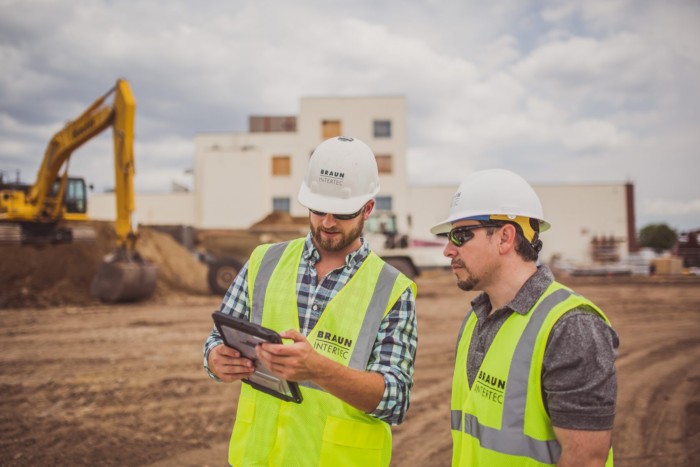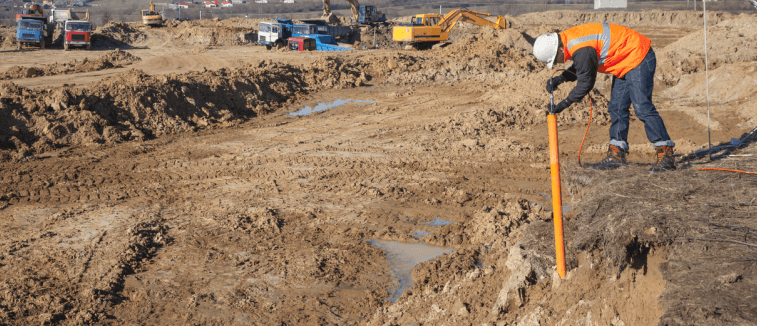The Importance of Dirt Evaluation and Website Investigation in the Geotechnical Market: Ensuring Security and Security in Civil Design
In the geotechnical market, dirt analysis and website investigation are fundamental elements that underpin the safety and security and security of civil design tasks. These procedures not just disclose the qualities of subsurface materials yet also educate crucial decisions relating to layout and construction methods. By extensively comprehending dirt residential or commercial properties, designers can preemptively attend to prospective difficulties, ultimately guarding architectural stability. The effects of these investigations prolong past instant project success; they can affect lasting sustainability and strength. As we discover the complexities of these methods, it becomes obvious that their importance can not be overstated.
Recognizing Soil Characteristics
In the realm of geotechnical engineering, a detailed understanding of soil buildings is paramount for educated decision-making and effective job style. The characterization of dirt entails the assessment of numerous physical and mechanical properties, such as grain dimension distribution, plasticity, cohesion, permeability, and shear strength. These buildings dictate how soil behaves under various loading conditions and environmental impacts, making them vital for analyzing site suitability for building and construction tasks.
Dirt classification systems, such as the Unified Soil Classification System (USCS) and the AASHTO classification, supply structures for grouping dirts based upon their qualities. This classification aids engineers in predicting behavior under stress and anxiety, water circulation, and negotiation, thereby influencing design selections and building and construction techniques.
In addition, the communication between soil and surrounding structures is a key factor to consider in geotechnical design. Recognizing soil homes assists determine prospective difficulties, such as liquefaction in earthquake-prone locations or extreme settlement in soft dirts. By thoroughly assessing these residential or commercial properties, geotechnical designers can make sure the safety, stability, and longevity of frameworks, inevitably adding to the overall strength of civil design projects.
Approaches of Dirt Evaluation

In-situ tests include strategies such as Conventional Infiltration Tests (SPT), Cone Penetration Examinations (CPT), and vane shear tests. SPT examines the resistance of dirt to infiltration, offering data on density and stamina, while CPT determines dirt resistance and pore pressure, producing continual profiles of soil stratigraphy. Vane shear tests are especially beneficial for analyzing the shear strength of natural soils.
Research laboratory tests enhance these in-situ evaluations and involve tasting soil for regulated testing. Common lab techniques consist of Atterberg limits, which establish the plasticity attributes of fine-grained soils, and compaction examinations, which evaluate moisture-density partnerships. Extra tests, such as triaxial compression and unconfined compression examinations, are conducted to examine the shear stamina of dirt examples under different conditions.
Role of Site Examination
Site examination plays a pivotal function in the geotechnical engineering procedure, offering as the structure for understanding subsurface problems. This thorough assessment involves systematic exploration of dirt and rock residential properties, groundwater degrees, and other geological attributes that influence job safety and security.
Generally, website investigations include a range of strategies, consisting of boring boreholes, sampling, and in-situ screening. These approaches offer crucial information on the mechanical and physical characteristics of the ground, notifying designers regarding prospective obstacles such as dirt settlement, bearing capacity, and incline security.
In addition, website examination helps with the identification of unsafe materials and pollutants, making it possible for the application of suitable remediation steps. By establishing an exact subsurface profile, website examinations help to mitigate dangers connected with building, guaranteeing that jobs stick to security standards and policies.
The searchings for from an extensive website examination not just guide layout choices yet additionally affect building techniques and timelines. In summary, the value of site investigation can not be overstated; it is a vital step in the geotechnical engineering procedure, laying the foundation for successful task implementation while focusing on public safety and security and ecological stability.
Effect On Task Layout
A complete understanding of dirt attributes dramatically influences project design in the geotechnical sector. Soil analysis notifies engineers regarding the mechanical homes, structure, and behavior of the ground, which are vital consider figuring out the feasibility and safety and security of a building task. Precise data on soil compressibility, leaks in the structure, and strength enable the development of effective structure styles, guaranteeing that structures are properly supported and secure throughout their life-span.
Moreover, the presence of contaminants or unsteady soil layers can motivate modifications in project style, such as picking different building methods or materials. This proactive method minimizes dangers associated with dirt settlement, extreme loading, or lateral movement, hence guarding both the honesty of the structure and public safety.
The integration of dirt analysis into job design likewise assists in compliance with governing needs and ecological considerations. By attending to soil-related obstacles early in the layout process, designers can optimize resource allocation and reduce potential hold-ups and costs connected with unexpected website problems. Inevitably, extensive soil evaluation improves the total high quality and resilience of civil design projects, resulting in more resilient and lasting facilities.
Situation Studies and Examples
Showing the vital function of soil analysis in the geotechnical market, numerous case research studies highlight its influence on task results. One remarkable instance is the building and construction of a skyscraper building in midtown Los Angeles, where considerable soil screening exposed unsteady subsurface conditions. geotechnical engineers. By determining the existence of large clay, designers were able try this out to revamp the foundation, incorporating deep pilings that ensured stability and safety, ultimately protecting against prospective architectural failures

Last but not least, a dam task in the Southeast encountered hold-ups as a result of unexpected soil erosion concerns. Detailed soil evaluation allowed designers to implement effective stablizing techniques, making certain that the dam fulfilled safety and security regulations click over here now while adhering to the project timeline. These situations highlight the requirement of comprehensive dirt evaluation and website examination, highlighting their vital role in achieving secure and effective civil engineering projects.
Final Thought
To conclude, dirt evaluation and site examination are fundamental parts of the geotechnical market, playing a vital duty in making certain the security and stability of civil engineering jobs. By providing vital information on soil homes and subsurface conditions, these procedures inform you can try these out foundation layout and building and construction methodologies. In addition, detailed investigations add to risk recognition and risk reduction, ultimately improving the longevity and longevity of frameworks while maximizing resource appropriation throughout the task lifecycle.
In the geotechnical market, dirt analysis and website investigation are foundational components that underpin the safety and security and security of civil design tasks. Comprehending soil residential properties assists identify potential challenges, such as liquefaction in earthquake-prone areas or excessive negotiation in soft soils. SPT evaluates the resistance of soil to infiltration, supplying information on density and toughness, while CPT gauges soil resistance and pore stress, yielding constant accounts of soil stratigraphy. These situations emphasize the requirement of extensive dirt analysis and website examination, highlighting their crucial duty in achieving safe and successful civil design projects.
In verdict, dirt evaluation and site investigation are essential components of the geotechnical industry, playing a vital duty in guaranteeing the safety and stability of civil engineering jobs.